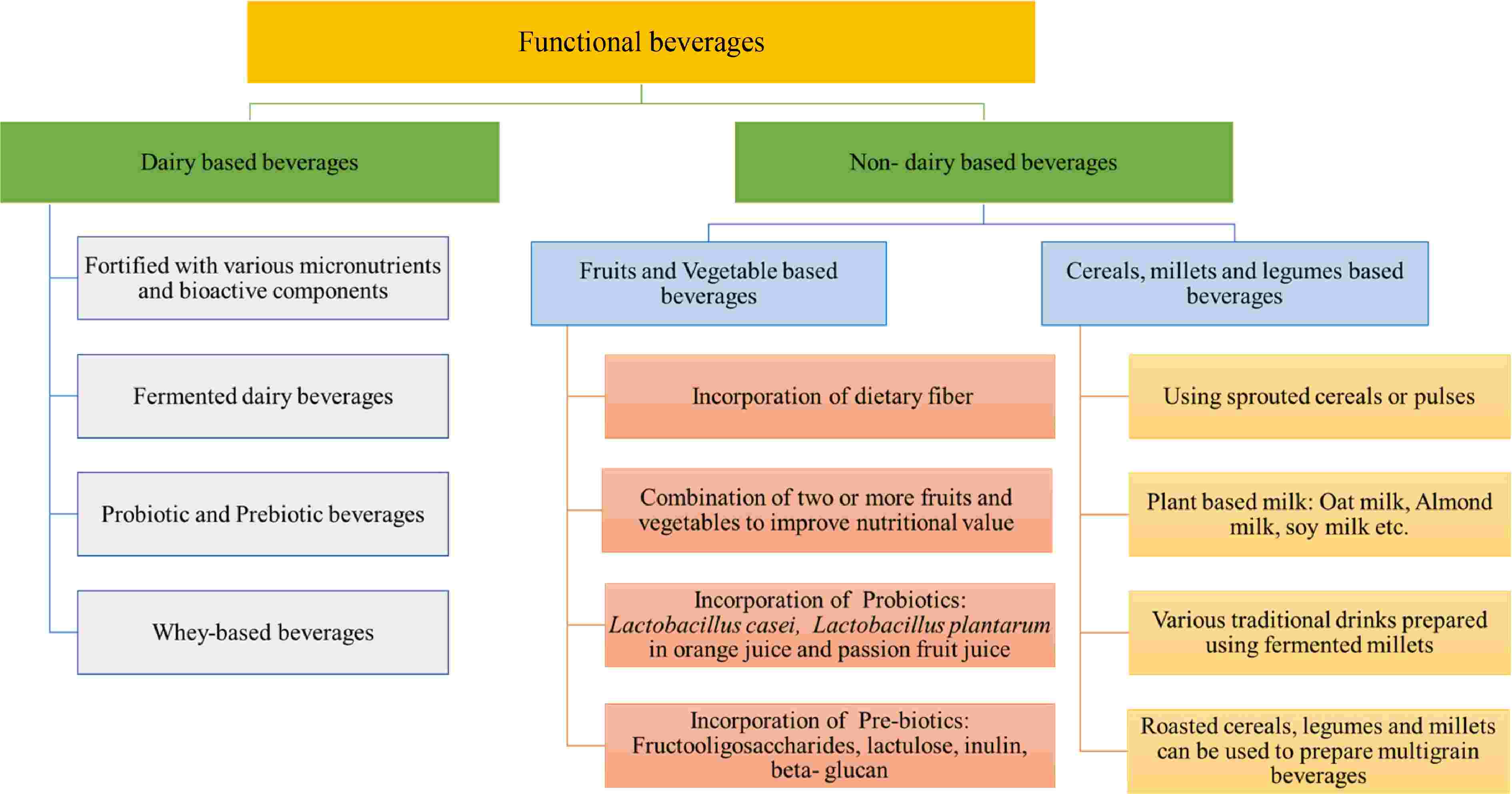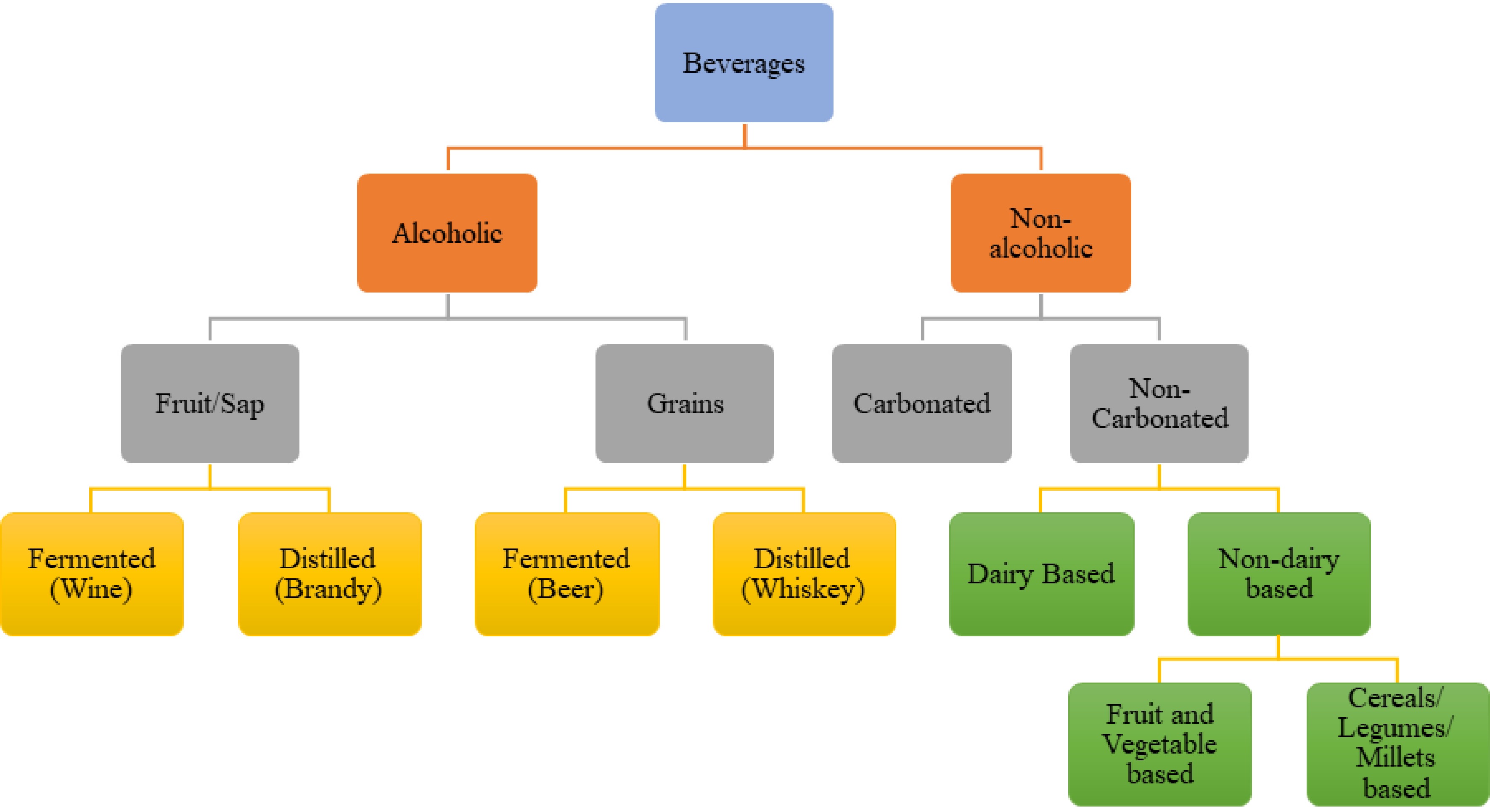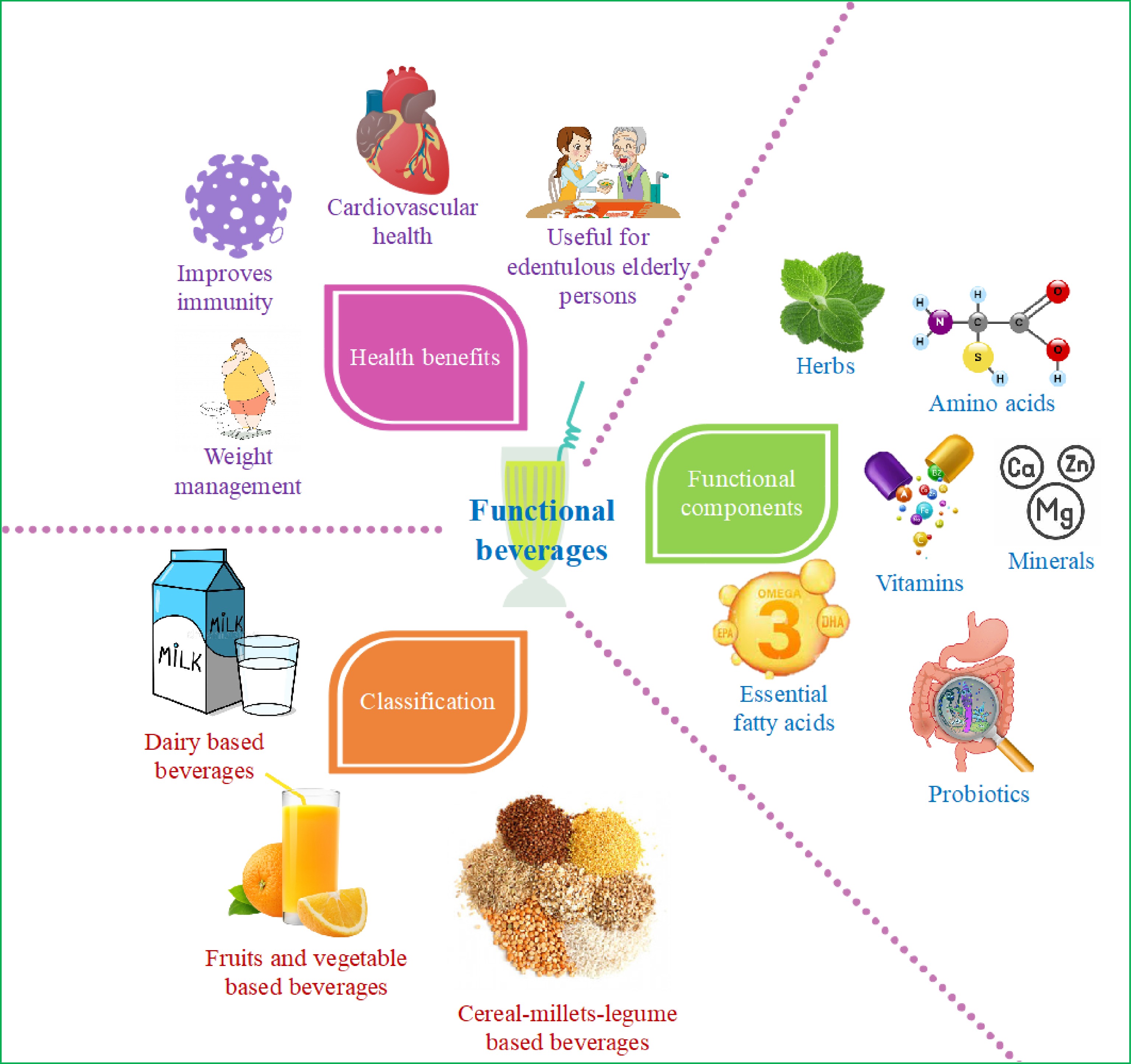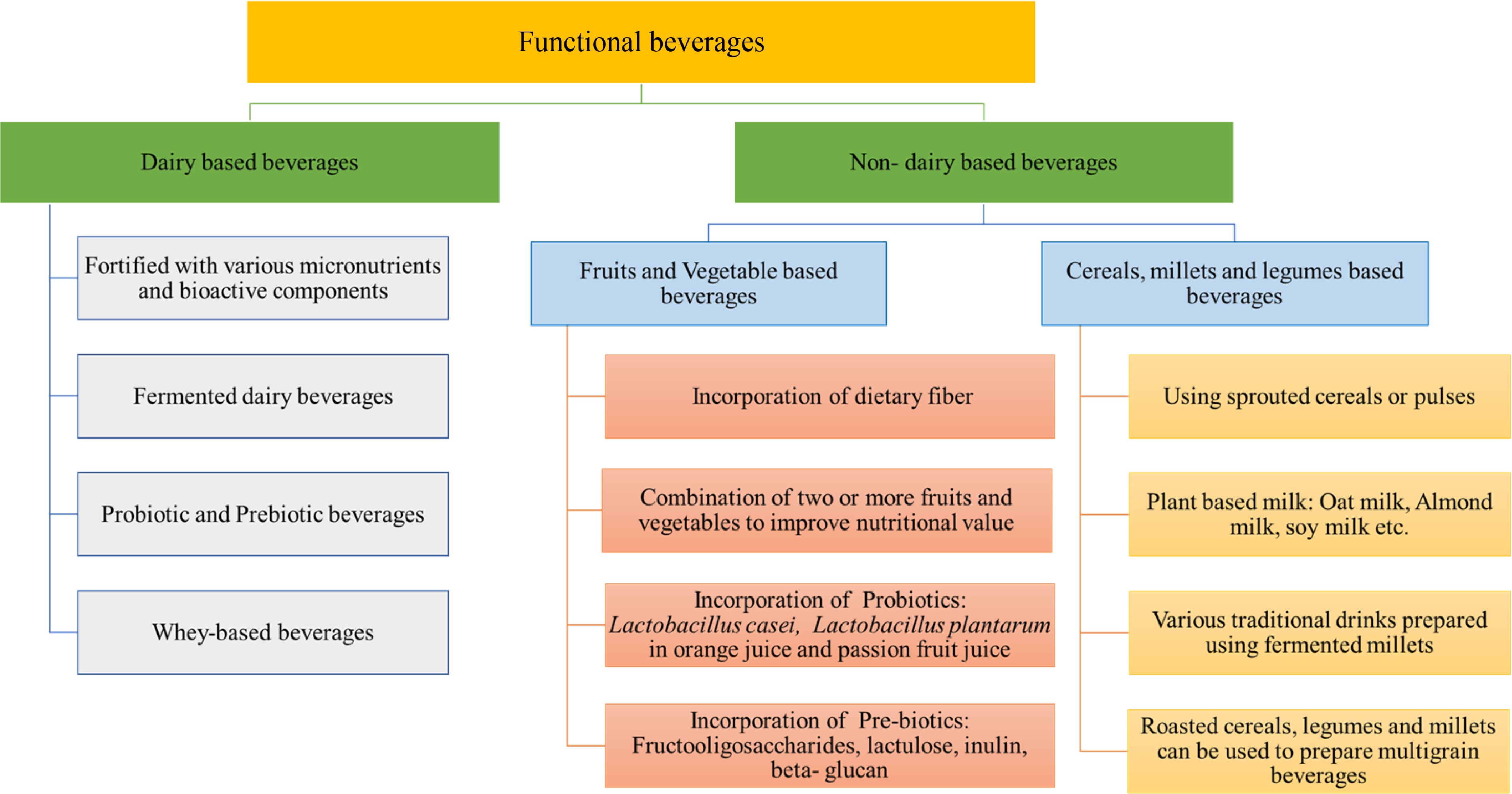-
In recent years, it has been observed that people are adopting healthier diets and there is an increasing trend towards veganism. A more sedentary lifestyle and physical inactivity is the major cause of increasing public health issues such as obesity, diabetes, and cardiovascular diseases. Nowadays, people are becoming more conscious of their health, especially after situations like COVID-19. Due to their busy schedules, people are becoming more interested in innovative food products that are convenient in terms of preparation and consumption and provide health benefits. This has led to a growth in the functional food market because they contain nutritional and bioactive compounds that provide health benefits[1]. Functional foods can be defined as the natural or industrially processed food products that have potentially positive effects on health, beyond basic nutrition when regularly consumed within a diverse diet at efficacious levels[2]. Among various kinds of functional foods, functional beverages are gaining high demand, and this industrial sector is substantially expanding over time. This is because, beverages are more convenient and can be easily fortified with various micronutrients and bioactive compounds to impart health benefits[3,4]. Basically, beverages can be classified into different categories as shown in Fig. 1. These can be alcoholic and non-alcoholic and non-alcoholic can be further divided into carbonated and non-carbonated. In this article, the focus will be on non-alcoholic, non-carbonated functional beverages. Functional beverages can be dairy-based or non-dairy-based. Due to the increasing trend toward veganism, the demand for non-dairy-based beverages is rising, also they are beneficial for people suffering from lactose intolerance[5,6]. Other than ready-to-serve beverages, instant mix and ready-to-reconstitute beverage powders have more potential as they are more convenient in terms of handling, transportation, and shelf stability. Non-dairy-based beverage powders include fruits and vegetable juices in dried form, flours of cereals, legumes, or their combination. Instant powdered beverages are those that rehydrate easily without forming any lumps and disperse in water with minimal agitation[7,8]. Beverage mixes are practical in terms of food preparation, occupy less space, and dried mixtures have greater microbiological stability.
Beverages in the form of meal replacements are one of the growing industries. Low-calorie protein-rich beverage premixes are widely consumed by diet-conscious people for weight management[9,10]. Meal replacement encompasses food products that are designed to replace one or two regular meals and can be used as a sole source of nutrients. It is a quick and easy way to provide a balanced diet containing high-quality proteins, carbohydrates, and other nutritional components. The majority of the meal replacements are fortified with vitamins and minerals[6]. Meal replacement beverages are also advised to overweight and obese patients by health care practitioners. Meal replacements include shakes, bars, and beverages. Powdered food items (ready to reconstitute beverages) can also be useful for elderly people who are unable to eat solid food due to illness or other conditions. Older people primarily suffer from poor oral health, particularly high levels of tooth loss, dental caries, and periodontal disease[10,11]. Edentulous people avoid food products that require chewing, so a meal replacement beverage can be helpful for them. In such a situation there is a need to have an alternate balanced food replacement, which may be instantly prepared and be used by the masses and meet the specific need of the subjects. Thus, the present review article is focused mainly on various types of functional beverages, instant beverage mixes, meal replacement beverages, and mathematical approaches for developing a beverage mix with balanced nutritional components.
-
Over the last few years, there has been a rise in the production and consumption of functional foods because of health concerns. Among functional foods, the functional beverage industry is growing at a fast rate[12]. This is mainly because beverages can be a suitable vehicle for various bioactive and nutritional compounds such as proteins, minerals, vitamins, antioxidants, and dietary fiber. Functional beverages can be of various types depending on the health concerns. This includes probiotic beverages, energy drinks, high protein drinks, meal replacement beverages, antioxidant-rich, fruit and vegetable beverages etc.[3]. Functional beverages can also be classified as dairy-based, non-dairy-based, fermented, fruit and vegetable-based, herbal, and cereal and legume-based beverages. Figure 2 describes the classification, functional components, and health benefits of functional beverages. Various approaches can be used in development of functional beverages, such as exploitation of micro-organisms, used of prebiotics, and utilization of by-products from fruits and vegetable processing (Fig. 3). Sports beverages can also be regarded as functional beverages that have been enriched with some micronutrients and high protein beverages for the health and recovery of athletes[13]. Herbal beverages or teas, that can be prepared from different plant parts such as leaves, flowers, stems, roots etc., are also categorized as functional beverages, as they are a rich source of natural bioactive components including phenolic compounds, flavonoids, carotenoids etc.[14]. Even the by-products of fruits and vegetable processing industry can be used in development of functional beverages. The outer skin of the plum peel obtained after extraction of plum juice or pulp can be used for production of beverages with high polyphenolic content and antioxidant activity[15]. Some of the broad categories of functional beverages are discussed here.
Dairy-based beverages
-
Dairy-based beverages comprise of fresh milk, value-added milk products such as low-fat milk, milk fortified with various micronutrients and bioactive components, and fermented and probiotic dairy beverages (Fig. 3). Whey-based beverages and probiotic beverages are the major contributors to functional dairy-based beverages. Fortification of milk with vitamins, minerals, omega-3 fatty acids, and phytochemicals is the most common method for the development of functional beverages. Fresh milk already being a good source of calcium is a better choice for calcium fortification in terms of solubility and stability. Tribasic calcium phosphate salt is used for the fortification of milk-based beverages. Some hydrocolloids and gums are also incorporated to prevent the sedimentation of added calcium salt[16]. Omega-3 fatty acids are one of the most popular functional ingredients that have gained importance in recent times. It is a precursor of Eicosapentaenoic acid (EPA) and Docosahexaenoic acid (DHA), both of which are essential for the development of the brain and cannot be synthesized in the human body[17]. Since it is highly susceptible to oxidation by heat and light, thus becomes difficult to incorporate into formulations. Therefore, it is added to dairy-based beverages at the time of bottling and requires packing material with low transparency, antioxidants and sequestrants are also added to prevent oxidation[18]. 'Dairy farmers' of Australia was the first company to launch omega-3 fortified dairy products under the brand name Farmers Best. They used omega-3 and mono-unsaturated fats to replace saturated milk fat[19].
Whey-based beverages are also gaining importance in the market, as they are a source of various nutraceutical ingredients such as lactoferrin, growth factors, and immunoglobulins[20]. Whey is the by-product obtained after the production of cheese. Whey protein concentrates and isolates are the major products utilized in dairy-based whey beverages. These can be fermented or non-fermented.
Dairy beverages are also the potential vehicle for probiotics. Probiotics can be defined as 'live microorganisms that confer a health benefit to the host when administered in adequate amounts'[3]. Among Lactobacilli, L. acidophilus, L. rhamnosus, and L. casei and B. bifidum among bifidobacterial are the most used probiotic bacteria. Kefir is a traditional milk based fermented beverage, that has probiotic properties. The intake of probiotic-enriched beverages is beneficial in re-establishing the intestinal microflora balance. Airag is the other fermented beverage prepared from mare milk by natural fermentation. It is popular in some regions of Russia and Asia. It is also recommended for various health ailments like asthma, tuberculosis, cardiovascular diseases, and pneumonitis[21].
Fruit and vegetable based beverages
-
Consumption of fruits and vegetables is a part of a balanced diet because they provide essential vitamins, minerals, and phytonutrients to the body. Beverages made by combining fruits and vegetables such as carrots, beetroots, spinach, grapes, cherries, etc., help strengthen the immune system and are beneficial in maintaining cardiovascular health[22]. With increasing awareness about diet and health, people are more interested in natural and nutritious beverages instead of processed and carbonated drinks. Fruit and vegetable juices can also be incorporated with dietary fibers to increase the satiety value. Studies have been conducted on the addition of pectin, alginates, and beta-glucan in beverages on the satiety value in subjects. Dietary fiber consumption is associated with improvement in a healthy gut microbiome. Insoluble dietary fiber is fermented by the colonic bacteria and releases short-chain fatty acids that play an important role in cardiovascular health[23]. Various studies have been conducted on the development of fruit and vegetable juice based functional beverages with improved nutritional profile and associated health benefits. Beverage formulated with blueberry, cranberry and apple juice along with ginger, some vitamins, minerals and amino acids was found to have cardioprotective effects and was referred to as a 'heart healthy' beverage[24]. Various combinations of fruit juices have been tried by researchers in order to improve the health benefits. Combination of elderberry, lemon fruit and red grapes were prepared to check the stability of ascorbic acid during storage[25].
Cereals, millets, and legume-based beverages
-
Cereals are the staple food and a major source of energy across the world, especially in Asian countries. Cereals along with pulses are consumed as regular meals. Malted and fermented beverages based on cereals have been consumed for a long time in various developing countries. Food grains are the potential substrate for fermentation because they are rich in carbohydrates[26]. Cereals and millets are widely used in the preparation of various alcoholic and non-alcoholic beverages. Sprouted or germinated cereals and legumes are also used in the development of probiotic beverages. 'Haria' is a traditional fermented beverage consumed mainly in West Bengal and is prepared from rice. It is useful for various health ailments like gastrointestinal problems, acidity, diarrhea, and dysentery[27]. Plant-based milks are also gaining importance and are replacing the dairy market because people are shifting towards veganism and are also beneficial for people suffering from lactose intolerance. Oat milk and almond milk are widely used nowadays.
Millets are also utilized in the preparation of various traditional beverages, 'Masvusvu' prepared from malted finger millet is consumed in many villages of Zimbabwe; 'Kunu-zaki', consumed in areas of Nigeria is a fermented beverage prepared using a combination of millets; and 'Mangisi' prepared from naturally fermented finger millet mash[28].
Among legumes, soy milk is one of the most famous plant-based beverages. Chickpea is also being explored for developing beverages. 'Sattu' is a traditional beverage powder prepared from roasted chickpea flour and is widely consumed in various regions of India during the summer. Studies have been conducted on the addition of chickpea extract in the development of yogurt-type beverages[29]. Cereals and legumes, when consumed alone, do not provide complete protein, so multigrain beverages containing a combination of cereals, legumes, millets, and nuts can be prepared to meet the nutritional requirements. Also, cereals and legumes provide complementary protein that improves the quality of protein in the product.
Probiotic beverages
-
Probiotics play an important role in improving the functionality of food products. Dairy based products and fruit juices are the most preferred carriers of beneficial micro-organisms for use as probiotics[30−32]. Probiotics are defined by FAO/WHO as the 'living micro-organisms which when administered in adequate amount confer health benefits to the host'. Yoghurt and fermented milk products are widely used dairy based probiotic carriers. Acidophilus milk containing Lactobacillus acidophilus is a fermented milk that has a beneficial role in preventing various digestive disorders. Based on a similar concept, the probiotic drink by Yakult consisting of Lactobacillus casei, strain Shirota was launched commercially and is very popular[5]. Another example of dairy based fermented milk is Bifidus milk, that is prepared by inoculating the heat-treated milk with Bifidobacterium bifidum and carrying out the fermentation at 37 °C. It has acidic taste and the lactic acid:acetic acid ratio varies from 2 to 3, and is associated with various health benefits[33,34]. Evolus, is a fermented dairy-based product, that has been found to be effective in reducing blood pressure. Decomposition of milk protein Casein by Lactobacillus heliveticus, leads to the formation of peptides, that are responsible for this health benefit.
Due to the shift in trend towards veganism and problems such as lactose intolerance, the potential of non-dairy substrates as carriers of probiotics is gaining importance. Various traditional fermented non-dairy based beverages are also known in different regions across the world, such as boza, Chhang, Togwa, Mahewu, Haria etc., that are prepared from cereals or millets. Fruit and vegetable juices are also the potential substrates for development of probiotic beverages[21]. Boza, is a traditional fermented beverage made from a combination of millets and cereals such as maize, wheat and rye, and is consumed in Bulgaria, Romania, Albania and Turkey. It is mainly comprised of yeast and LAB (lactic acid bacteria)[35]. Germinated sorghum and millet flour are used to prepare a fermented beverage known as Bushera. The microflora used for its fermentation include Lactococcus, Lactobacillus, Leuconostoc, Streptococcus and Enterococcus. Another such beverage is Togwa, consumed in Africa and prepared from finger millet malt and maize flour. It is also used as a weaning food[36]. Oats and soymilk can also be used as the substrate for probiotic cultures[37,38].
Fruit and vegetable juices can also be used as probiotic carriers and it is currently an area of research among industries that are focusing to develop fruit and vegetable-based ready-to-reconstitute probiotic beverage powders. Probiotic orange juice powder was developed using Lactobacillus casei[39] and probiotic containing passion fruit juice powder was developed using Lactobacillus plantarum[40]. Green tea extracts being rich in antioxidants that have oxygen scavenging properties can also be incorporated in fruit juices to generate anaerobic conditions for the growth of probiotic bacteria and also improve their stability[41].
Other than probiotics, the functional beverages can also be fortified with prebiotics. Prebiotics can be defined as the ingredients that are not digested in the human gut, but they benefit the host by promoting the growth of bacterial species that are present in colon and thus beneficial for health, as they regulate the gut microflora[42]. Fructooligosaccharides, lactulose, inulin, beta- glucan etc are some of the compounds that can be used as prebiotics. Incorporation of fructooligosaccharides have been found to improve the human health by decreasing total cholestrol, and providing relief from constipation. It also promotes the growth of Bifidobacterium species in the digestive tract[43]. The combination of prebiotics and probiotics, that are known as the synbiotics, can also be used for designing functional beverages, as prebiotics improve the viability of probiotics. The study has been conducted on functional beverages prepared using fermented carrot juice supplemented with fructooligosaccharides and inulin along with bacterial cultures of L. rhamnosus and L. bulgaricus[44].
Instant beverage mix
-
Instant beverage powders or mixtures are those that have ready to reconstitute characteristics and rehydrate easily when mixed with water. Powdered beverages have high microbiological stability due to low water activity and are more convenient in terms of storage and transportation. Various kinds of powdered drinks are available in the market, including powdered milk, fruit, and vegetable juice powders. Spray drying and freeze drying are the most used techniques for the development of powdered drinks. Various factors that determine the quality of powdered beverages are wettability, flowability, dispersibility, and solubility[45]. The market for flavored powdered drinks is increasing tremendously. Dairy-based spray dried products such as whole milk or skimmed milk powder, protein isolates, whey powders, and whey protein isolates are widely consumed[46]. Spray-dried milk powders can also be incorporated with other ingredients like ginger and Di fructose anhydride fortification to improve their health benefits[47]. Researchers have also studied the characteristics of spray-dried soy-milk powder, where maltodextrin was used as a binding agent. Enrichment of soymilk powder with phytosterols helps lower serum cholesterol levels[48].
Fruit and vegetable juice powder is the major growing segment in the beverage industry. As people are becoming concerned about and more focused on incorporating fruits and vegetables into their daily diet, but busy schedules have led to the development of the easier solutions (in the form of juice powders) and an area of research for industries. As reported in the literature, studies have been conducted on the development of mandarin juice powder[49], grape syrup powder[50], pomegranate juice powder[51], and pineapple juice powder[52]. Various examples of vegetable juice powders include spinach juice powder[53], amla juice powder[54], carrot juice powder[55], and beetroot juice encapsulation with soy protein[56]. Recent studies on the development of instant beverage mixtures are discussed in Table 1.
Table 1. Recent studies on instant beverage mix based on dairy, fruits and vegetables and cereals, millets and legumes.
Beverage type Description Reference Dairy-based Whey protein-based beverage • Whey protein isolate was used for the preparation of the beverage mix.
• Additional antioxidant components (polyphenols from marjoram extract, astaxanthin, and vitamins) were incorporated into the feed.
• Spray drying was carried out to get instant beverage powder.[50] Kefir powder • Fermented milk product
• Kefir grains are used for fermentation.
• Spray drying was carried out using skim milk powder/ whey permeate/ maltodextrin as carrier agent.[51] Probiotic pineapple lassi powder • Freeze drying was used to develop the product.
• Bifidobacterium bifidum was used as probiotic culture.
• Probiotic curd was blended with pasteurized pineapple juice along with addition of sugar, maltodextrin and CMC (Carboxymethyl cellulose).[52] β-glucan fortified milk powder • β-glucan is a soluble dietary fibre.
• β-glucan in liquid milk causes instability.
• Spray drying technique was used to formulate the beverage mix.[53] Fruits and vegetable-based White dragon fruit juice powder • Dragon fruit is rich in antioxidants and helps lowering the blood cholesterol.
• Spray drying technique was employed using maltodextrin as wall material.
• RSM was used for process optimization.[54] Sugarcane juice powder • Sugarcane juice is used for treatment of jaundice and health issues related to liver.
• Vacuum evaporation of sugarcane juice was done to achieve 30°Brix.
• Maltodextrin was added to aid in spray drying.[55] Beetroot extract-based
beverage powders• Beetroot, quince fruit and cinnamon extracts were used (75:24:1).
• Foam-mat freeze drying (FMFD) and foam-mat hot air-drying (FMHD) methods were used.
• 3% albumin powder and 20% of maltodextrin were used for foam preparation.
• Beverage prepared with FMFD powders had more overall acceptability.[56] Mix fruit and vegetable instant drink powder • Red spinach, red bean, guava and beetroot were used.
• Foam mat drying technique was used.
• Mix juice was rich in iron content.[57] Cereals-millets-legume based Millets based instant health mix
(millets : legumes - 3:1)• Millets used: Ragi, sorghum, bajra
• Legumes used: green gram
• Malting of all the grains followed by extrusion of malted flour and then grinding
• 1% probiotic culture of Lactobacillus rhamnosus[58] Quinoa based fermented probiotic beverage mix • Raw and roasted quinoa grains were fermented for 6 h and 9 h respectively
• Fermentation using Lactobacillus plantarum
• Reduction in phytate content
• Fruit flavours were used to improve the acceptability[59] Pearl millet-based beverage powder • Two varieties of pearl millet were used
• Raw and malted pearl millet flour followed by extrusion, were used individually and in combinations also.
• Improved protein and starch digestibility[60] Black rice based instant beverage mix • Burma black rice was combined with germinated lentil flour, sweet potato and mulberry flour.
• Black rice was soaked for 30 min and then steamed (50 min) and dried to prepare flour.
• Improved nutritional characteristics.[61] Chickpea based enzyme treated
beverage powder• Raw and extruded chickpea flours treated with alcalase and alpha-amylase sequentially.
• Thermo-extrusion followed by enzymatic catalysis improves the nutritional profile.
• Protein digestibility and protein digestibility corrected amino acid score (PDCAAS) was improved.[62] Sattu mix (multigrain) • Canadian peas, maize, chickpea, wheat, barley and oats were used, to prepare two different formulations.
• Chickpea based traditional sattu was used as control.
• Roasting was carried out as preliminary processing of grains.
• Combination of cereals and legumes improved the nutritional quality of the product.[63] Fermented fruit and vegetable juice powders can also be used as probiotic beverage powders. Probiotic passion fruit juice and Sohiong fruit juice powder incorporated with Lactobacillus plantarum[40,57], and probiotic orange juice powder incorporated with Lactobacillus casei[39] are some examples.
Various plant-based milk alternatives such as soymilk, almond milk, coconut milk, and oat milk are available in the market that imitates dairy milk. Germinated cereals and pulses can also be used to develop a powdered beverage mix. Germinated barley, moth bean, and ragi were used to develop the probiotic drink mixture that was reconstituted using water, almond milk, and coconut milk and then incubated for 6 h after adding probiotic culture[58]. It was found that utilization of germinated flour resulted in higher antioxidant properties in comparison to non-germinated. A combination of cereals, pulses, and millets can also be used to prepare beverage mixes, as they have complementary amino acid compositions, that in combination improves the quality of the protein. In a recent study, sorghum, finger millet, sprouted green gram and soy flour were used along with dairy whitener and desiccated coconut[59]. Malted beverage powders are also quite popular in the market nowadays. Malted finger millet in combination with pulses and skimmed milk powder was used to develop health drink powder. Millets are rich in minerals and phytonutrients, and their consumption is associated with several health benefits, and are also known as 'Nutri-cereals'[60]. One of the most popular beverage powders is roasted Bengal gram flour, commonly known as 'Sattu'. It is widely consumed in various parts of India during summer. It can also be prepared by combining with roasted flours from other cereals, pulses, and millets to improve its nutritional value. Fruit and vegetable juice can also be used for the fortification of Sattu. Sattu prepared in combination with 10% beetroot juice was found to have increased antioxidant potential[61]. Cereal based carbonated beverage mix with adequate nutritional content was developed using roasted maize in combination with pulses (Bengal gram) and millets (Finger millet) along with pea protein isolate and sugar[62]. Multigrain mixtures prepared from malted, and roasted food grains have been used since ages for the development of weaning foods, infant formulas, and porridges for older people.
-
Sedentary lifestyle has led to an increase in obesity among the population and obesity is the major cause for various health issues including type-2 diabetes. It is also considered that 'sitting' is equivalent to 'smoking'. An increase in awareness about health and weight management has resulted in increased interest in commercial weight loss programs and dietary supplements. Meal replacement products (MRP) are a category of products that are consumed by people focusing on weight loss. Apart from weight loss, MRPs in the form of drinks can also be used by elderly patients that have a problem in chewing food and as a weaning food. Also, there is a problem of Protein-energy malnutrition (PEM) among infants that do not get adequate nutrients during the weaning phase. So, a combination of food grains can be used to develop protein-rich meal replacement products. Meal replacements are used to replace one or two regular meals and must contain a balance of macro and micronutrients.
Meal replacement products include shakes, bars, and powdered drinks. High protein powders and shakes are used by individuals for bodybuilding. Various protein sources such as soy protein isolates, whey protein isolates, or concentrate are used to develop sports drinks[63]. MRPs are also fortified with vitamins and minerals to prevent micronutrient deficiencies that are common in energy restriction diets[64]. Meal replacements can also be used as a vehicle for substances that have potential health benefits. Incorporation of inulin, which is a non-digestible polysaccharide, is found to have a positive effect on the metabolism of lipids[65,66].
Locally available cereals and legumes can be used to develop meal replacements for elderly people. A combination of brown rice flour, bean starch along with soybean flour and black sesame seed, and rice bran oil were used as a source of carbohydrate, protein, and fat to develop a balanced product, low in sugars and saturated fatty acids[11]. Rice, wheat, ragi, whole chickpea, whole green gram, puffed Bengal gram, defatted soya powder, almond, cashew nut, sesame, and poppy seeds were used to develop a composite mix with improved nutritional characteristics. This composite mix can be further used to develop various other food products, such as beverage mixes, snacks and savory products[67]. In another study, staple cereals and legumes, namely wheat, sorghum, green gram, and Bengal gram along with groundnut, spirula, sugar, and gooseberry were used to develop a weaning mix[68]. A combination of cereals and pulses was used to develop nutrient-dense 'poshan mix' to combat malnutrition. It consisted of malted green gram, horse gram, and wheat along with skim milk powder and drumstick leaf powder[69].
-
The major purpose of optimization is to find a condition that provides the best output for the system[70]. The optimization of the ratio of ingredients in beverages and powdered beverage mixtures is important to develop nutritionally adequate products that can be either used as complimentary food or meal replacements. As per previous studies, the authors have used several optimization techniques for product development, namely response surface methodology (RSM), linear programming, Fuzzy logic etc. RSM is the widely used multivariate statistical technique for the optimization of food processing conditions. It is a useful approach for designing, developing, and optimization of the process where several variables affect the response[71]. A peanut-based beverage was developed by optimizing the levels of barley malted milk powder and peanut paste using a two-component mixture design and the overall acceptability of the beverage was used as a response for optimization. The optimum concentrations obtained were 60% peanut paste and 40% malted milk powder and the quadratic model effectively explained the variation in the overall acceptance of the samples[72]. A powdered beverage having low glycemic index and high dietary fiber was developed using mango bagasse. Statistical optimization of the formulation was carried out using response surface models, with minimum viscosity and sedimentation index as the optimum responses. The beverage powder also fulfilled the FAO requirement to be considered a high-fiber beverage[73].
Wheat germ-based beverage powder was developed, and ingredient optimization was carried out using D-optimal mixture design and a fuzzy mathematics approach was used for sensory evaluation. The beverage mix consisted of 50% wheat germ powder, 11.5% sugar, 37.89% maltodextrin, and the remaining were gums and stabilizers[74].
Linear programming is a mathematical tool, used to minimize or maximize a linear function of decision variables with respect to multiple constraints. It can be effectively used to formulate diet designs with required nutritional constraints along with cost minimization[75]. Grain-based beverage premix was developed using linear programming and the formulation obtained was roasted maize (30 g), roasted Bengal gram (30 g), finger millet (10 g), sugar (20 g), pea protein isolate (10 g)[62]. Cereal-legume composite flour/blends can be formulated to meet protein and energy requirements. Micronutrients or amino acids premix can also be incorporated into the blends to maintain the protein energy ratio. Linear programming was effectively used to optimize the cereal-legume blends for the development of complementary food. Lysine was added as a supplement to improve the protein quality and palm oil was used as a source of fat to meet the energy requirement. To meet the micronutrient requirement, fortification of the blend with vitamins and minerals would be required[76]. People belonging to low strata cannot afford highly priced protein or energy-dense foods. So, the development of a product that fulfills nutritional requirements at a minimum cost is a challenge. Protein-rich infant food mixture with a low cost was formulated using chickpea, rice, soya bean meal and methionine supplement. Bananas and sugar were used to improve the flavor of the product. The major constraints used for the formulation were: amino acid balance (mainly lysine and sulphur-containing amino acids); material balance; the minimum and maximum amount of ingredients; and cost minimization. Three formulations were prepared from the above cereals and legumes, out of which the formulation having maximum protein content and low cost consisted of 70% chickpea, 29.78% rice, and 0.22% methionine[77]. Linear programming has also been used to develop ready-to-use therapeutic foods (RUTF), using fish, various cereals, millets, legumes, pumpkin seeds, oil, and dairy powders to meet the UNICEF-RUTF requirements[78].
-
Consumption of functional foods has been rising recently mainly due to the associated health benefits, and beverages are the growing sector under functional food products. Beverages can be the potential carriers for incorporating desirable functional ingredients, antioxidants, dietary fibre, vitamins, and minerals. Functional beverages play an important role in improving the health and decreasing the risk of various chronic diseases[3]. Improvement in cardiovascular health, digestive health, immunity, obesity and cancer prevention are some of the benefits of consuming functional beverages[79,80]. Health benefits of fruit and vegetable juices are mainly associated with the presence of bioactive compounds, vitamins and minerals. Consumption of pomegranate juice has been found to reduce serum lipid peroxides, blood sugar levels, and blood pressure. Pomegranate juice is a rich source of ellagitannins, which are mainly responsible for these health benefits[81,82]. Atherosclerosis in the initial stages can be prevented by the consumption of berry, pomegranate and black currant juices as they are rich in polyphenols[22,83,84].
Cereal based beverages like rice milk, oat milk, corn milk etc. are also gaining popularity as they are beneficial for lactose intolerant people. Rice milk is rich in thiamine, selenium and magnesium, which helps in preventing viral and bacterial infections and improving the immune system[85]. Oat milk is associated with reduction of blood cholesterol levels due to the presence of high amounts of β-glucan[86].
Utilization of cereals, legumes and millets for the development of multigrain composite mixes can be used to prepare beverage mixes having several health benefits. Food grains in germinated or roasted form are generally used for developing beverage mixes. Multigrain mixtures are known to possess nutritional properties in terms of balanced amino acid composition, improved protein quality, high dietary fiber and are rich in phytochemicals[87]. These multigrain beverages can be effectively used as meal replacement products. Various beverage premixes prepared from malted cereals or millets are commercially available. Roasted Bengal gram flour (Sattu) is widely consumed in India during summer that is beneficial for gastro-intestinal health, and aids in weight loss.
-
Changing consumer attitudes towards health and wellness have resulted in an increased demand for functional foods and beverages. People are more focused on better food choices that provide improved nutrition. Beverages are potential products that can be used for improving health along with economic development. They can be easily incorporated with various health-promoting components and can also be useful for various health ailments. In past years, dairy beverages have occupied the market, but recent trends are shifting towards plant-based beverages. This has resulted in the development of several innovative products. Powdered beverages, ready to reconstitute, or instant mixtures is the area that has started to gain importance. Multigrain beverages have great potential as functional beverages, as they provide a balance of amino acids, improved protein quality, dietary fiber along with various micronutrients. Fortification with vitamins and minerals may also be done to fulfil daily requirements. Multigrain beverage mixtures with balanced nutritional composition could be potential meal replacement products.
-
The authors confirm contribution to the paper as follows: conceptualization: Kaur R, Prasad K; resources: Kaur R, Shekhar S; data curation: Kaur R; writing—original draft preparation: Kaur R; writing—review and editing: Kaur R, Shekhar S, Prasad K; visualization: Prasad K; supervision: Prasad K; project administration: Prasad K. All authors have read and agreed to the published version of the manuscript.
-
All data generated or analyzed during this study are included in this published article.
-
The authors declare that they have no conflict of interest.
- Copyright: © 2024 by the author(s). Published by Maximum Academic Press on behalf of Nanjing Agricultural University. This article is an open access article distributed under Creative Commons Attribution License (CC BY 4.0), visit https://creativecommons.org/licenses/by/4.0/.
-
About this article
Cite this article
Kaur R, Shekhar S, Prasad K. 2024. Functional beverages: recent trends and prospects as potential meal replacers. Food Materials Research 4: e006 doi: 10.48130/fmr-0023-0041
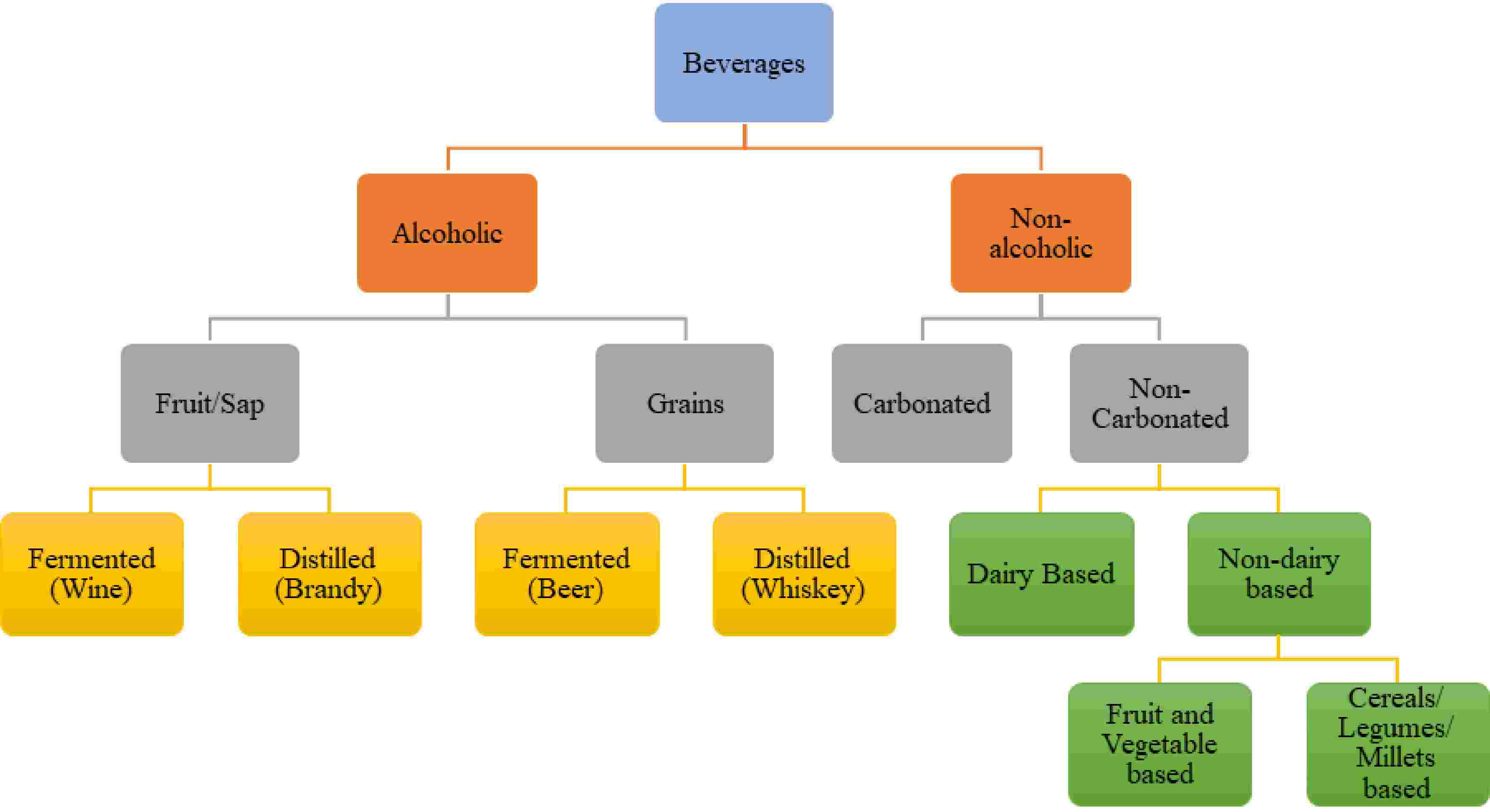









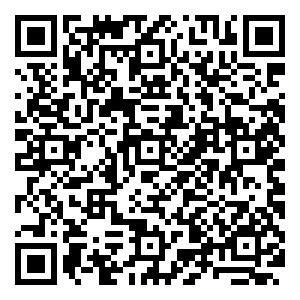
 DownLoad:
DownLoad:

